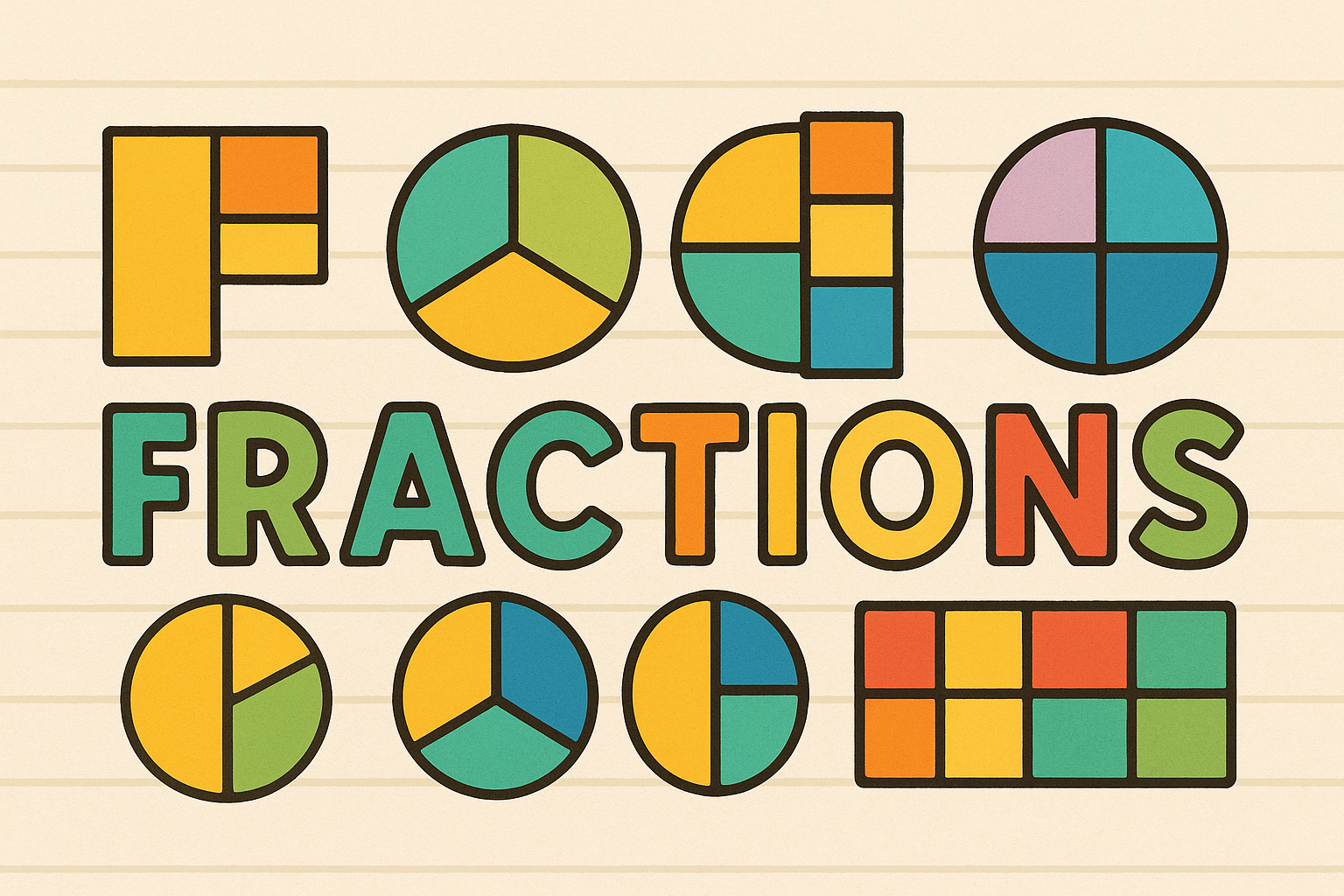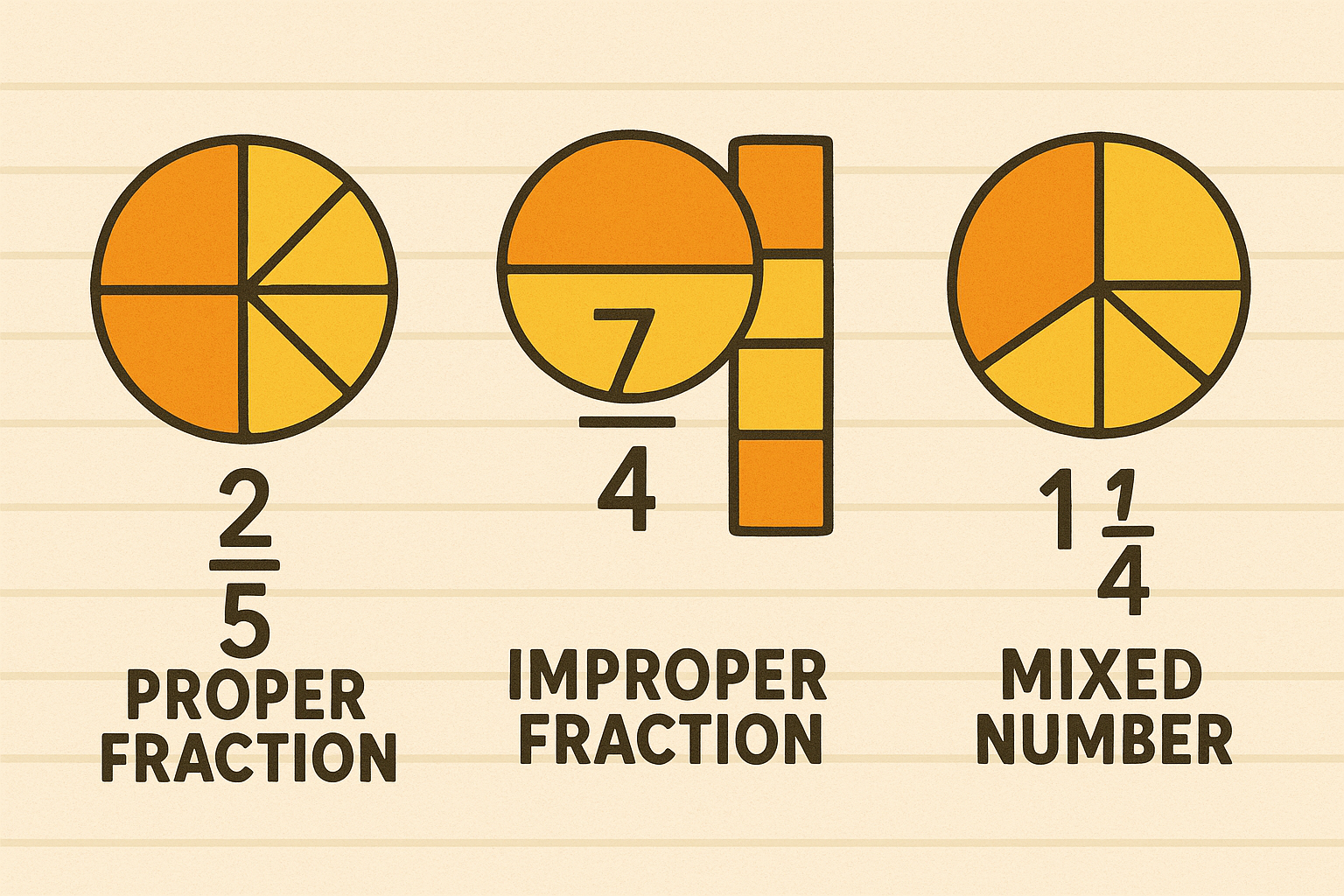Understanding Fractions: A Fun & Easy Guide for Students
Mathz AI Editorial Team

Ever felt like fractions are frustrating? You're not alone! Many students struggle with these mathematical expressions, but they're actually one of the most practical math concepts you'll ever learn. Whether you're dividing pizza slices, measuring ingredients for a recipe, or calculating discounts while shopping, fractions are everywhere in daily life. In this comprehensive guide, we'll break down fractions into bite-sized pieces that are easy to understand and fun to learn.
What Are Fractions, Really?
At their core, fractions represent parts of a whole. Imagine a chocolate bar divided into 8 equal pieces. If you eat 3 pieces, you've consumed 3/8 of the chocolate bar. In this fraction:
- The number on top (3) is called the numerator - it tells you how many parts you have
- The number on the bottom (8) is called the denominator - it tells you how many equal parts make up the whole
Types of Fractions You Should Know

Proper Fractions
When the numerator is smaller than the denominator (like 2/5), you have a proper fraction. These fractions are always less than 1.
Improper Fractions
When the numerator is larger than or equal to the denominator (like 7/4), you have an improper fraction. These fractions are always greater than or equal to 1.
Mixed Numbers
A mixed number combines a whole number with a proper fraction (like 3½). It's another way to express improper fractions.
Converting Between Different Forms
Improper Fractions to Mixed Numbers
- Divide the numerator by the denominator
- The quotient becomes your whole number
- The remainder becomes your new numerator
- The denominator stays the same
Example: Convert 11/4 to a mixed number
- 11 ÷ 4 = 2 remainder 3
- So 11/4 = 2¾
Mixed Numbers to Improper Fractions
- Multiply the whole number by the denominator
- Add the numerator
- Put this sum over the original denominator
Example: Convert 2¾ to an improper fraction
- 2 × 4 = 8
- 8 + 3 = 11
- So 2¾ = 11/4
The Four Basic Operations with Fractions
Addition and Subtraction
To add or subtract fractions, you need a common denominator first. Then:
- Find the least common multiple (LCM) of the denominators
- Convert each fraction to an equivalent fraction with the LCM as the denominator
- Add or subtract the numerators
- Simplify the result if possible
Example: 2/5 + 1/3
- LCM of 5 and 3 is 15
- 2/5 = 6/15
- 1/3 = 5/15
- 6/15 + 5/15 = 11/15
Multiplication
Multiplying fractions is straightforward:
- Multiply the numerators together
- Multiply the denominators together
- Simplify if possible
Example: 2/3 × 3/4
- 2 × 3 = 6
- 3 × 4 = 12
- 6/12 = 1/2 (simplified)
Division
To divide fractions:
- Take the second fraction and flip it (find its reciprocal)
- Multiply by the first fraction
- Simplify if possible
Example: 2/3 ÷ 3/4
- Flip 3/4 to get 4/3
- 2/3 × 4/3 = 8/9
The Secret Sauce: Finding Equivalent Fractions
Equivalent fractions represent the same value but look different. To find equivalent fractions:
- Multiply or divide both the numerator and denominator by the same non-zero number
- The fraction value remains unchanged
Example: 2/3 = 4/6 = 8/12
Comparing Fractions: Which is Bigger?
Method 1: Cross Multiplication
- Multiply the first numerator by the second denominator
- Multiply the second numerator by the first denominator
- Compare the products
Example: Compare 3/5 and 2/3
- 3 × 3 = 9
- 5 × 2 = 10
- 9 < 10, so 3/5 < 2/3
Method 2: Convert to the same denominator and compare numerators
Real-World Applications of Fractions
Fractions aren't just abstract math concepts - they're incredibly practical:
- Cooking and Baking: Adjusting recipes requires understanding fractions (doubling a recipe that calls for ¾ cup of flour)
- Construction and Woodworking: Precise measurements often use fractions of inches
- Music: Note durations are expressed as fractions (quarter notes, half notes)
- Shopping: Calculating discounts (25% off = 1/4 off)
- Time Management: Portions of an hour (15 minutes = 1/4 hour)
Common Fraction Mistakes to Avoid
- Adding denominators: Remember, 1/2 + 1/3 is NOT 2/5!
- Forgetting to find common denominators before adding or subtracting
- Canceling incorrectly when simplifying fractions
- Mixing up multiplication and division rules
Challenge Yourself: SAT-Level Fraction Problems
Ready to test your fraction mastery with some challenging problems? Here are five medium to hard SAT-style questions that will put your skills to the test:
Problem 1: Complex Fraction Operations
If 2/3 of a number is 10 less than 3/4 of the same number, what is the number?
A) 120
B) 100
C) 80
D) 60
Problem 2: Ratio Analysis
Jack and Jill shared a bag of marbles in the ratio 3:5. After Jack gave 12 of his marbles to Jill, the ratio became 1:3. How many marbles were in the bag originally?
A) 64
B) 72
C) 80
D) 96
Problem 3: Fraction of a Whole
A class consists of 30 students. If 2/5 of the students are boys and 1/3 of the girls play sports, what fraction of the entire class consists of girls who play sports?
A) 1/5
B) 3/15
C) 2/9
D) 1/3
Problem 4: Algebraic Fractions
If (x+2)/(x-3) = 5/2, what is the value of x?
A) 4
B) 5
C) 7
D) 13/3
Problem 5: Fraction Word Problem
A baker uses 3/4 cup of flour to make a batch of 12 cookies. She wants to make 30 cookies but only has 1 2/3 cups of flour available. How many more cups of flour does she need to make all 30 cookies?
A) 1/6
B) 1/4
C) 1/3
D) 5/12
Ready to put your fraction skills to the test? Mathz AI's interactive tutor provides personalized practice to strengthen your understanding!
Conclusion
Fractions may seem intimidating at first, but with practice and the right approach, they become an essential tool in your mathematical toolkit. Remember that mastering fractions is like building with blocks - start with a solid foundation of understanding what fractions represent, then gradually build up to more complex operations.
Ready to become a fraction master?
Log into Mathz AI today and start your personalized fraction learning journey!
Try Mathz AI Now →Mathz AI Editorial Team
Education Specialists

